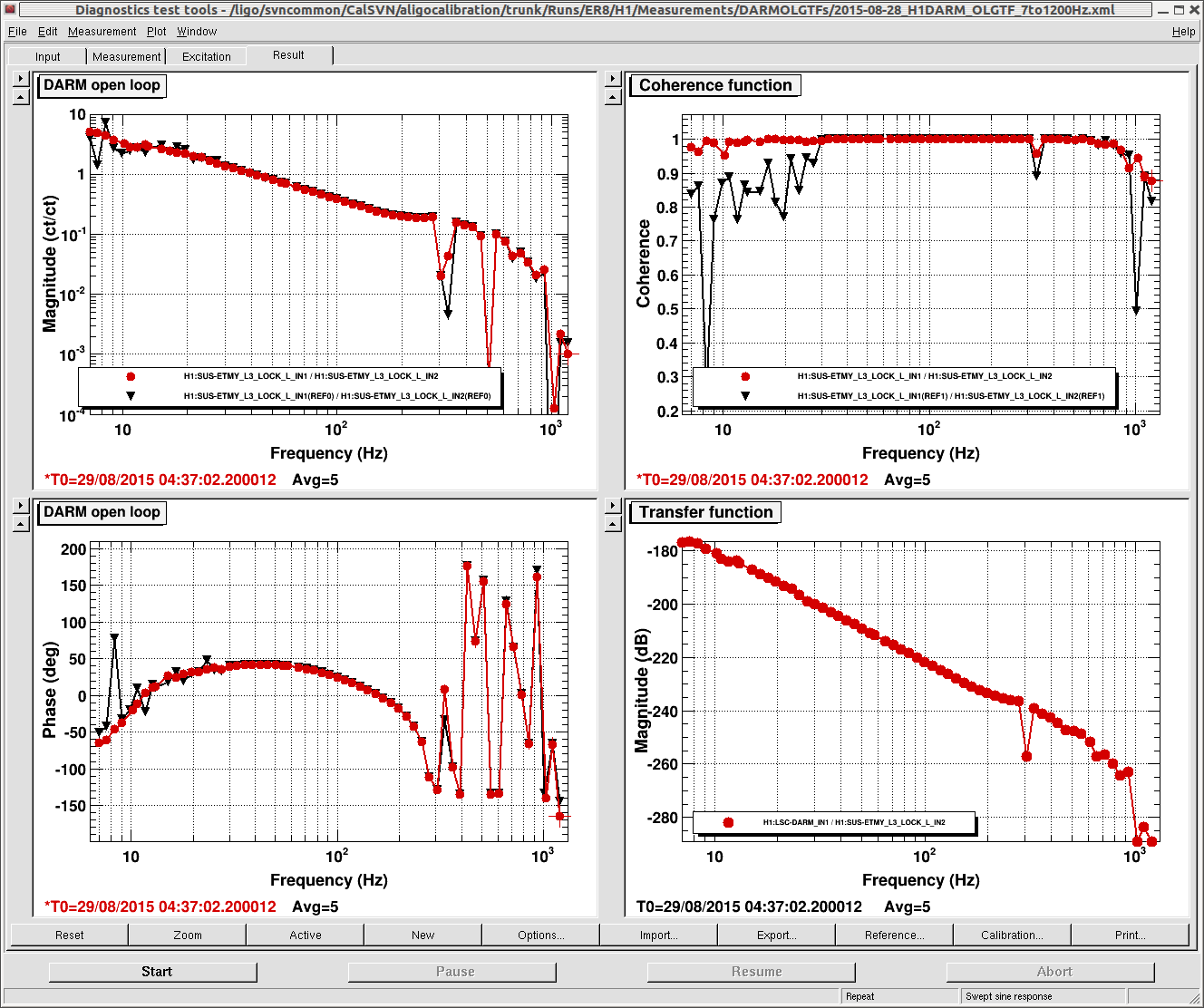I have completed a set of measurements that is necessary for nailing down the ETMY actuation scale factors. This is a third round of the measurements in order to study repeatability and systematic errors. The measurement data can be found at the follwong places.
-
Full lock ETMY L3
-
aligocalibration/trunk/Runs/ER8/H1/Measurements/FullIFOActuatorTFs/2015-08-29/2015-08-29_H1SUSETMY_L3toDARM_LVLN_LPON_FullLock.xml
-
-
Full lock ETMY L2
-
aligocalibration/trunk/Runs/ER8/H1/Measurements/FullIFOActuatorTFs/2015-08-29/2015-08-29_H1SUSETMY_L2toDARM_FullLock.xml
-
-
Full lock ETMY L1
-
/aligocalibration/trunk/Runs/ER8/H1/Measurements/FullIFOActuatorTFs/2015-08-29/2015-08-29_H1SUSETMY_L1toDARM_FullLock.xml
-
-
Full lock ETMX
-
aligocalibration/trunk/Runs/ER8/H1/Measurements/FullIFOActuatorTFs/2015-08-29/2015-08-29_H1SUSETMX_toDARM_FullLock.xml
-
-
Full lock Pcal Y sweep
-
aligocalibration/trunk/Runs/ER8/H1/Measurements/FullIFOActuatorTFs/2015-08-29/2015-08-29_H1SUSETMY_PCALYtoDARM_FullLock.xml
-
-
Full lock Pcal Y sweep in wide band (7 - 1200 Hz)
-
aligocalibration/trunk/Runs/ER8/H1/Measurements/PCAL/2015-08-29_PCALY2DARMTF_7to1200Hz.xml
-
-
Full lock DARM open loop in wide band (7 -1200 Hz)
-
aligocalibration/trunk/Runs/ER8/H1/Measurements/DARMOLGTFs/2015-08-29_H1DARM_OLGTF_7to1200Hz.xml
-
-
ALS Diff ETMX drive
-
aligocalibration/trunk/Runs/ER8/H1/Measurements/ALSDIFF/2015-08-29/2015-08-29_ALSDiff_ETMX_L3_HVHN.xml
-
-
Mich lock ITMX drive
-
/aligocalibration/trunk/Runs/ER8/H1/Measurements/FreeSwingMich/2015-08-29/2015-08-29_H1SUSITMX_L2_State2_MICH.xml
-
-
Mich lock open/closed loop
-
aligocalibration/trunk/Runs/ER8/H1/Measurements/FreeSwingMich/2015-08-29/2015-08-29_MICH_OLGTF.xml
-
-
Mich free swing time series
-
aligocalibration/trunk/Runs/ER8/H1/Measurements/FreeSwingMich/2015-08-29/2015-08-29_H1MICH_freeswingingdata.xml
-
-
Xarm locked ITMX drive
-
aligocalibration/trunk/Runs/ER8/H1/Measurements/FreeSwingMich/2015-08-29/2015-08-29_H1SUSITMX_L2_State2_XARM.xml
-
-
X arm locked ETMX drive
-
aligocalibration/trunk/Runs/ER8/H1/Measurements/FreeSwingMich/2015-08-29/2015-08-29_H1SUSETMX_L3_HVHN_XARM.xml
-




















